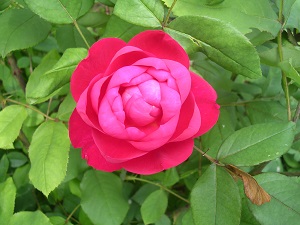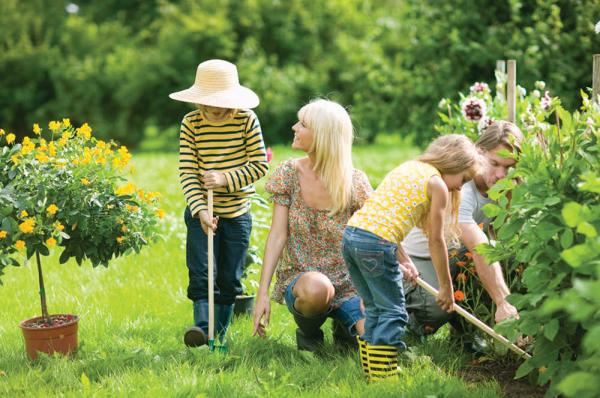Want to grow green beans, but don’t have a “green thumb”?. These handy hints will tell you all you need to know to have a vege patch full of green beans in next to no time.
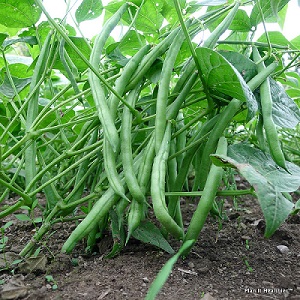
Types of Green Beans. There are actually 2 sorts of green bean plants, bush beans and pole beans. The names pretty much describe the growing pattern of the plant itself, not the bean. Bush beans are self-supporting plants that will grow in height to 2-3 feet, while pole beans are climbing plants and require either a fence, pole, cage, or trellis to climb up. The other main difference is the length and size of the harvest. Bush beans will provide you with beans sooner, but pole beans are more prolific once they come to harvest.
Some avid gardeners will plant both types, ensuring green beans sooner from the bush plant, while waiting for the pole beans to harvest.
Requirements. Regardless of which bean plant you select, the requirements are similar. Green beans do best in full sun, as in 6-8 hours daily. They will grow with less, but your bean crop will be reduced. Beans like a rich well drained soil, with a pH between 6 and 6.8. Since beans have a shallow root system, they do not take kindly to a lot of disturbance of the ground once they have been planted.
When to Plant. Beans are slightly fussy and will not grow when it is either too hot or too cold. Optimal air temperatures are between 50 and 80 deg F.
Soil temperature is critical for a successful harvest of beans. Bean seeds will germinate at 60 deg F minimum, but prefer the 70-80 deg range. The optimal time to plant the seeds is when the soil has warmed up to 60 deg F, this should coincide with the last spring frost. Those who want to get a head start on Mother Nature can actually plant their seeds indoors 3-4 weeks before the anticipated final frost in paper containers or peat pots that will break down. (This eliminates the need to disturb the roots of the seedlings in transplantation. ) Wait till 1 or 2 weeks after the frost to replant the seedlings.
Those gardeners who do not experience Jack Frost in winter can plant their seedlings earlier, once the soil has reached 60 degrees. In fact, those with really mild winters can actually plant bean seeds in autumn.
It can be a great idea to stagger the planting times of bush beans. Planting seeds every fortnight will mean that you do not end up with a feast or famine situation.
Planting the Seeds. You may have already noticed that we keep talking about been plant seeds. That is because beans do best when grown from seeds. Another important point to consider before planting the seeds is that beans won’t grow well if you plant them where you grew the cabbage, tomatoes, or potatoes last year.
Bush bean seeds can be planted in rows, to a depth of between 1 1/2 and 2 inches, and about 1 -2 inches apart. The rows should be spaced about 2 to 2 1/2 feet apart. Once you have covered the seeds with dirt, water the seeds in well. After 5-10 days your efforts will be rewarded with seedlings coming through.
Once the plants are about 3 inches tall, it will be time to thin them down. First up, remove any that are not thriving or looking as vigorous as their neighbors. Ideally, you will have a row of healthy looking plants that are about 3-4 inches apart.
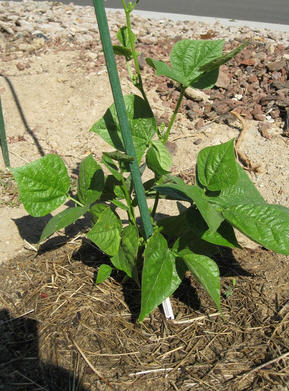 Plant pole bean seeds around whatever it is they will be growing up or supported by. Don’t forget that pole bean plants can be up to 8 foot tall, so be sure to select an appropriate size support. The ideal spacing is about 4-6 inches. You can also plant pole bean seeds on mounds, or little hills. Hills can be up to 3 feet tall and should be about 3 feet apart. If you are growing your pole beans in rows, the rows should be spaced about 3 feet apart.
Plant pole bean seeds around whatever it is they will be growing up or supported by. Don’t forget that pole bean plants can be up to 8 foot tall, so be sure to select an appropriate size support. The ideal spacing is about 4-6 inches. You can also plant pole bean seeds on mounds, or little hills. Hills can be up to 3 feet tall and should be about 3 feet apart. If you are growing your pole beans in rows, the rows should be spaced about 3 feet apart.
Rotate the crop. Bean plants are susceptible to root rot if they keep getting planted in the same part of the vege patch. Ideally, they should be moved every season. Worst case scenario, is a maximum of 3 years in the one spot.
Space challenged gardeners can plant rosemary, sunflowers, or corn in amongst the pole beans. Bush beans will grow happily alongside strawberries, rosemary, corn, and celery.
Watering. Do not wet the seeds before planting. Do not over-water once you have planted the seeds. The seeds need to be kept moist but not water logged. Once the plants are sprouting you can reduce watering. However, this does not mean that your beans will grow in desert like conditions. Mulching can be an excellent idea to help maintain even moisture levels around the plants.
Bean plants are susceptible to fungus. Obviously you cannot do anything about rain, but when watering the plants aim the hose or watering can at the ground and not at the plants themselves. Having the plants at a good distance apart will also help keep fungal problems down. The beans should not be handled when they are wet.
Fertilizing. Generally, bean plants can grow well with just an initial application of a good quality fertilizer or garden compost when preparing the ground for planting. Beans do not like fertilizers that are rich in nitrogen, in fact this will reduce your haul.
 Pests. A blast of well aimed water from the hose can remove pests such as mites, leaf-hoppers, and aphids. Alternatively, insect powders compatible with edible produce can be used. The Mexican bean beetle can be plucked off, however if you spy any eggs lurking under a leaf, you should remove the entire leaf.
Pests. A blast of well aimed water from the hose can remove pests such as mites, leaf-hoppers, and aphids. Alternatively, insect powders compatible with edible produce can be used. The Mexican bean beetle can be plucked off, however if you spy any eggs lurking under a leaf, you should remove the entire leaf.
Picking the Beans. After 45-60 days your bush plants will be giving you beans. You will have to wait a little longer for the pole plants, about 60-85 days. Bush beans will give you beans for about 2-4 weeks, while pole beans can last an entire season.
To avoid fungal diseases, the beans should only be picked when the plant is dry. Beans should not be picked in extreme weathers, neither too cold nor too hot. Do not let the beans stay on the plant for too long as this will not only result in leathery beans, but also decreased bean production. Frequent picking of the beans will encourage more beans to grow. Take a little care when picking the beans to avoid damaging the plant.
Enjoy!
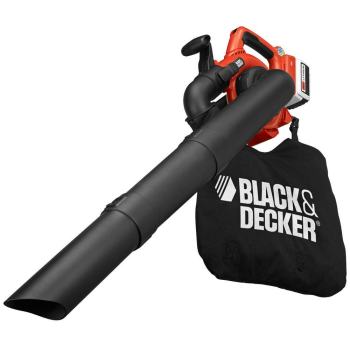




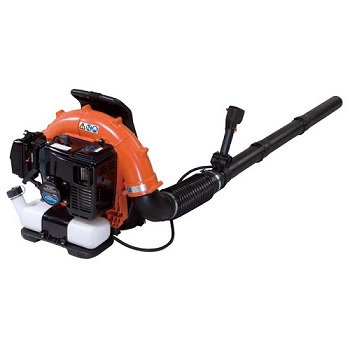



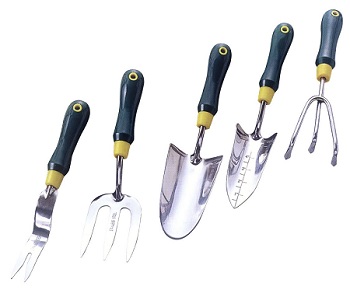
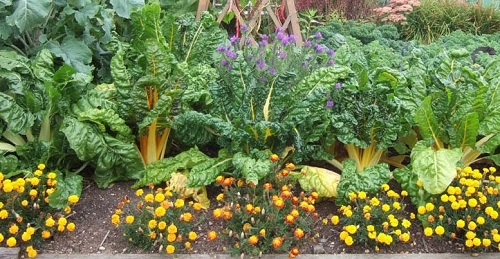 Are you bored on how your lawn area looks now? Do you want some
Are you bored on how your lawn area looks now? Do you want some 